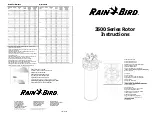
General safety instructions
Subject to modifications
US edition 2021/01
VOGT Air Lance Original operating manual
13
Contact:
+49(0)92 78-774 33-0
+49(0)92 78-774 33-11
www.vogt-tec.com
3�5 Residual risks
Noise
If inadequate ear protection is worn, the impact of high noise levels can
cause permanent hearing loss and other problems such as tinnitus (a
ringing, whooshing, whistling or buzzing noise in the ear). The owner must
carry out a risk assessment regarding these hazards and take measures to
reduce noise and protect health. Observe the following:
The VOGT Air Lance must be operated and maintained as
recommended in the manual.
Take additional measures to reduce noise in the workplace.
Use hearing protection equipment in accordance with your employer’s
policies and/or health and safety regulations.
Dust/fumes
When using the lance for dry cleaning/sand blasting, low-toxicity (harmful),
toxic, highly toxic, carcinogenic, teratogenic or mutagenic substances can
be emitted into the work environment/on the objects to be cleaned. The
owner must carry out a risk assessment regarding these hazards and must
take measures to prevent hazardous substances from being released or,
if they are, to collect them and divert them away and/or provide personal
protective equipment. Observe the following:
The risk assessment must cover the types of dust generated during
use as well as the types of dust that may already be circulating in the
air.
If any dust or fumes are released, the top priority is to monitor these
where they are released.
The VOGT Air Lance must be operated and maintained as
recommended in the manual.
Observe the material safety data sheets for the operating materials
used.
Use respiratory protection equipment in accordance with your
employer’s policies and/or health and safety regulations.
Ejected objects
Objects, dust, materials, loose workpieces or the lance itself can be ejected
during use:
Ensure that any component or workpiece to be worked on is fixed
securely in place.
Always wear impact-resistant eye protection. The level of protection
should be assessed separately for each use.
Wear a safety helmet when working overhead.
Also assess risks to other people within the working range of the
device and take appropriate safety precautions.














































